History of Road in the United Kingdom
The present United Kingdom’s roads system covers more than 200,000miles in an elaborate network, which links all areas of the country. However, achieving such an ostentatious linkage of roads has taken considerable time. It can be traced back to periods before the introduction and invention of motor vehicles in the country. Indeed, the first ever recorded roads were constructed using timber in the first century by Romans. The establishment of timber roads in Britain marked the start of the country’s road networks (Elvik, Vaa, Erke & Sorensen 2009). Between 43AD and 410AD, more than 2000-mile roads had been constructed. However, because of the evident few or no technologies then, it was a very sumptuous network of roads during this time. These roads were mostly used for military and trade purposes. At the time, the economic activities that common citizens were involved in were very minimal. Most families practiced subsistence farming that required minimal movement or involvement in the economy, and hence the very little usage of the roads (Wegman, Zhang & Dijkstra 2012). Just as it is today where London is the centre of the country’s roads networks, during the early period of road construction by the Romans, it was chosen as the centre of the roads, which linked the city to Chichester, Dover, York, Carlisle, St. Edmund and the rest of the western parts of the country. More than 1500 years down the line, since the new roads were developed in the country, the current road network retains some of the original road layout whereby some parts of the current A2, A15, A24, A30, and A257 still follow the course of the first roads in Britain (Newnam & Goode 2015). The introduction of motor vehicles in the early 20th century marked the start of the period of great road construction and related technologies to meet the growing demand. The motor vehicles also introduced new challenges such as road safety and road-related crimes, which required radical changes. Since then, the level of expertise that is used in road construction has changed. Road safety has also become a major issue, owing to the high number of people who use roads today and the associated safety issues such as accidents and other incidents as it will be discussed later in the paper.
Overview of Road Networks in the UK
The United Kingdom’s road network is one of the most elaborate systems in the world. As of 2013, the country’s road network covered a distance of 245,728miles. The network constituted Motorways, Trunk A’ roads, Principle A’ roads, major roads, and minor roads as presented in the table below (Newnam & Goode 2015). The table also presents the road network length statistics of 2003 for comparison to show how the road network has expanded during the given period.
From the above table, it is evident that although the road network has grown at a rate of 0.8% during the 10-year period, the UK road network is very elaborate and that continues to grow substantially (Herring 2014). Despite its elaborate network, the country’s highways lag behind those of its European counterparts such as Germany and Spain. Highways in each of these countries exceed more than 10,000miles as compared to only 2161miles that are found in the United Kingdom. The following map shows the UK road network. Emphasis is laid on the most important routes in the country.
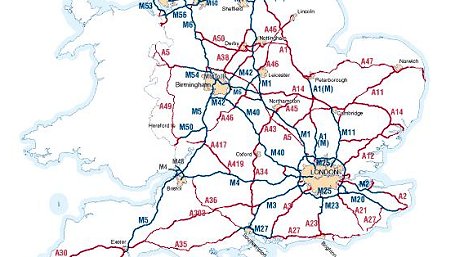
The UK road network follows a distinctive classification process, which allows motorists to identify the standard of the roads they want to use while at the same time assisting in navigation. In the early 20th century, the country saw the need for classification of roads to determine their quality and usage. Such classification allowed the government and relevant authorities to allocate funding for road construction and maintenance (Salmon, McClure & Stanton 2012). Although the First World War initially hindered the classification process, it soon continued in 1919 as stipulated in the Ministry of Transport Act of 1919. In the initial classification, roads were grouped as either Class I or Class II where the central government funded the maintenance of the roads to 60% for the former and 50% for the latter, while local authorities funded the remaining funding. In the late 1960s, the road classification system was overhauled. This change ushered in the system of categorising roads alphanumerically (Wang, Quddus & Ison 2013). For instance, the use of A (Main Roads), B (Minor Roads), and M (motorways) has remained even today. In the current classification, ‘A’ roads are major and important routes that link important towns. They have a large traffic, for example, A1 road. Motorways are numbered as M or a combination of M and A. For instance, the A1 (M) is an example of a road, which indicates that the road, which was initially classified as A, was upgraded to a motorway.
The elaborate road network without any doubt deserves the acknowledgement as indicated by the number of vehicles that are registered to ply the roads of the country. For instance, 2013 statistical findings show more than 32million vehicles that used the UK roads, of which more than 83% were cars (Newnam & Goode 2015). Such a high figure of vehicles demands an extensive road network to support the traffic as evidenced by the highly managed and maintained roads that characterise the United Kingdom. The Traffic Management Act of 2004 has seen the establishment of various statutory bodies such as the Highways Agency, which manages Motorways and Major A roads in England and the High Authority, which manages all other roads in collaboration with the local authorities of the respective areas where these roads pass.
Road Furniture Technologies in the UK and their Impact on Road Safety
The extensive road networks in the UK and across the world have led to safety concerns. Consequently, safety measures have been incorporated into rules and regulations that guide traffic, as well as the road construction process through the road furniture concept (Wegman, Zhang & Dijkstra 2012). Road furniture is a shared word that is used to denote to all items that are fitted on roads or along the highways for several reasons. For this paper, the concept of road furniture will be used to indicate all items and materials that are fitted on highways for safety reasons.
The need for safe roads is an important part of any country, owing to the number of people who use the roads on a daily basis. Further, the number of people who die annually on the roads due to traffic-related accidents and incidents is very costly to the economy and hence the need to have measures that can reduce these accidents and incidents to improve safety. Road furniture technologies have evolved significantly over the years. Currently, they constitute major pieces and objects that range from traffic lights and road signs, road barriers, and cameras.
Firstly, managing the traffic flows is a major issue in the UK due to the sheer number of vehicles that ply the UK roads on a daily basis. For instance, road signs form an important part of the road furniture in the country. Road signs are used to communicate important information to road users for not only their safety but also for the ease of using the roads (Wegman, Zhang & Dijkstra 2012). For instance, traffic control lights are very important in road intersections to control traffic movement across the intersections. Connections are very risky. Without such lights, it is easy for vehicles to collide and cause dangerous accidents. Before the advent of traffic lights, traffic police officers used to control the movement of vehicles across intersections. Currently, traffic lights are controlled by computerised systems that consider the amount of traffic and other conditions in deciding the duration that the respective traffic will be allowed across the intersection.
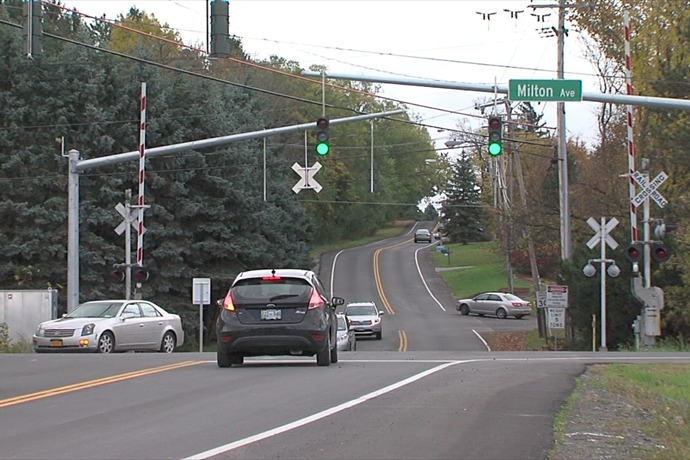
Other numerous road signs are present on the UK road networks. For instance, signs that show street names are very important since they make it easy for navigation and reference. They are also important for ensuring safety since they allow easy recognition of location in case of any instances on the road.
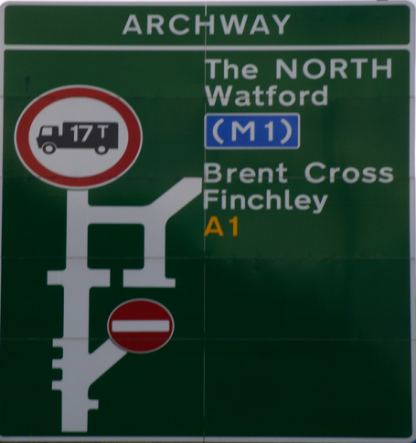
Other structures are also important in controlling or restricting traffic to the allowed road sections. For example, bollards are important road furniture components that control vehicles from entering sidewalks, grass, or any other purpose. They are important for safety purposes since they help to safeguard pedestrians on the sides of the road. Bollards can be permanent or temporary.
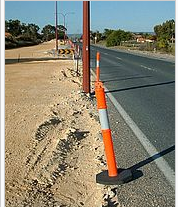

Road barriers or crash barriers are import road furniture components in all modern roads. They are very crucial in ensuring the safety of motorists and pedestrian. Road barriers are constructed in high-risk areas such as sharp corners. They divide dual carriages, protect pedestrian walks, and/or protect vital installations near the roads. The road barrier technologies have evolved significantly. Due to technology, it is not possible to construct crash-tested barriers that can withstand a strong impact. Consequently, they help in keeping the vehicles on the road.
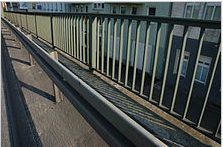
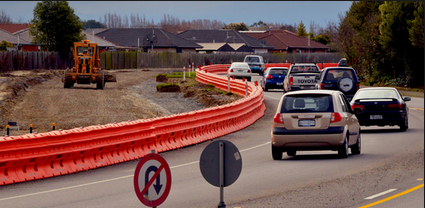
Just like other places in the world such as the USA and Australia, the road network in the UK has streetlamps/ lights, which illuminate the streets for ease of seeing for both pedestrians and motorists. Initially, such lights or lamps were meant to reduce petty crimes such as mugging of pedestrians. Currently, they are very important safety furniture components for all roads, especially in major cities.
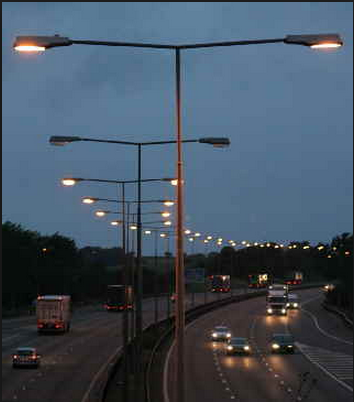
Telephone booths are other important road furniture elements in the UK. They are positioned in major roads throughout the country (Newnam & Goode 2015). These telephone booths are very imperative for communication, especially when an individual is in trouble in a place where he or she cannot access mobile phones. Just like the USA where mailboxes have become trademarks of the roads, telephone booths are common in Britain. However, the popularity of the telephone booths is reducing drastically due to the growing popularity of mobile phones.
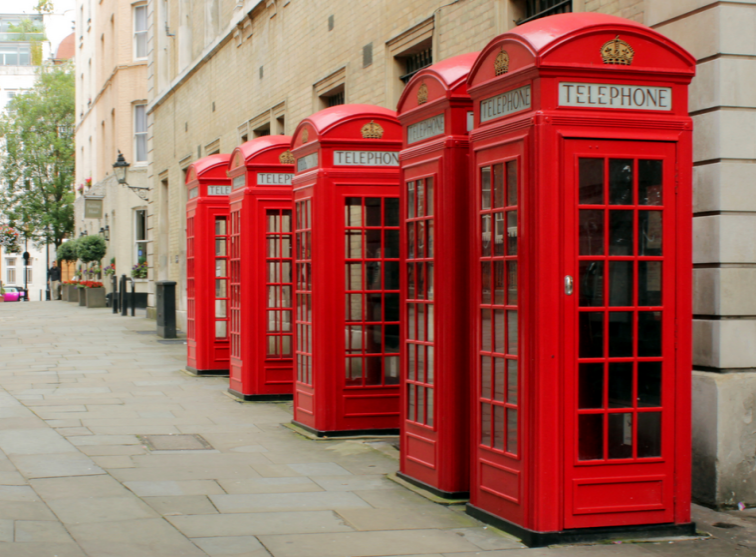
Other road furniture components include fire hydrants, public lavatories/restroom facilities, and post boxes among others. They are all important in ensuring not only ease of usage of the UK roads but also safety for all road users. It is evident that the use of road furniture features prominently on the UK roads. The elements bring important benefits to the road users. The only negative issue is that they increase the cost of constructing and maintaining roads. This cost is worth it, owing to the number of people that the furniture helps to protect each day.
Toll Roads and Freeways in the UK Highways
The UK has two categories of roads, depending on whether charges are involved or not when driving through them. Roads where charges are made are referred to as toll roads. On the other hand, other roads that are free to use are referred to as freeways. In these categories, the freeways are more than the toll roads. This situation makes it easier and cheaper to drive through as compared to other European countries. The toll roads are managed by toll collecting authorises, which have set tollgates or stations where drivers can pay £3-6, depending on the size of the vehicle and the time of the day (Herring 2014). The money that is collected from these toll roads goes towards their maintenance. The rest of the roads that do not charge any toll fees are the majority in the UK. In the United States, the freeway version of roads is referred to as the Expressway. The United Kingdom replicated this version.
Conclusion
The importance of roads in the United Kingdom cannot be ignored since it forms a central tenet of the transport system in the country. Further, the history of the roads in the country can be traced back to the first century when Romans arrived in London where they began building wooden roads. With the industrial revolution, the need for roads became even more prominent for the purposes of trade. Although the development of roads was slowed by the invention of the rail system, the emergence of motor vehicles in the early 20th century ushered in a new era of road network development. Currently, with more than 32million cars on the UK roads, the main concern has been ensuring safety on the roads and hence the important role that the road furniture plays. Road furniture includes many objects and road installations that make the roads safe for pedestrians and motorists. As compared to other countries, the UK has done a commendable work in installing these road furniture components, which have guaranteed safety for all people in the country.
References
Elvik, R, Vaa, T, Erke, A & Sorensen, M 2009, The Handbook of Road Safety Measures, Emerald Group Publishing, Cambridge, MA.
Herring, E 2014, ‘Joining the Modern World: A Study of Street Furniture in Post-War Britain’, Blucher Design Proceedings, vol. 1, no. 1, pp. 551-556.
Newnam, S & Goode, N 2015, ‘Do not blame the driver: A Systems Analysis of the Causes of Road Freight Crashes’, Accident Analysis & Prevention, vol. 76, no. 1, pp. 141-151.
Salmon, P, McClure, R & Stanton, N 2012, ‘Road transport in drift? Applying Contemporary Systems Thinking to Road Safety’, Safety Science, vol. 50, no. 9, pp. 1829-1838.
Wang, C, Quddus, M & Ison, S 2013, ‘The Effect of Traffic and Road Characteristics on Road Safety: A Review and Future Research Direction’, Safety science, vol. 57, no.1, pp. 264-275.
Wegman, F, Zhang, F & Dijkstra, A 2012, ‘How to Make More Cycling Good for Road Safety?’, Accident Analysis & Prevention, vol. 44, no. 1, pp. 19-29.